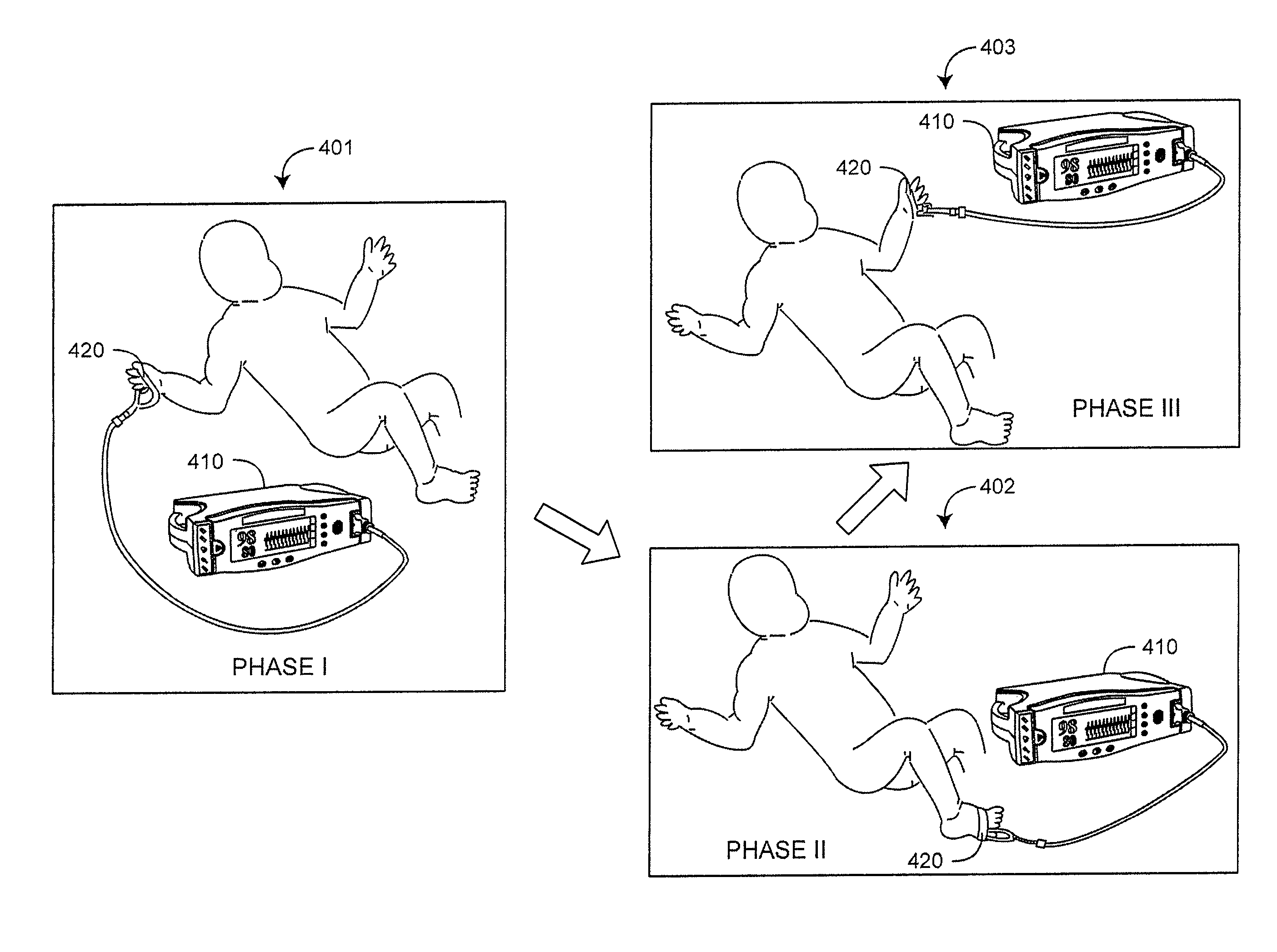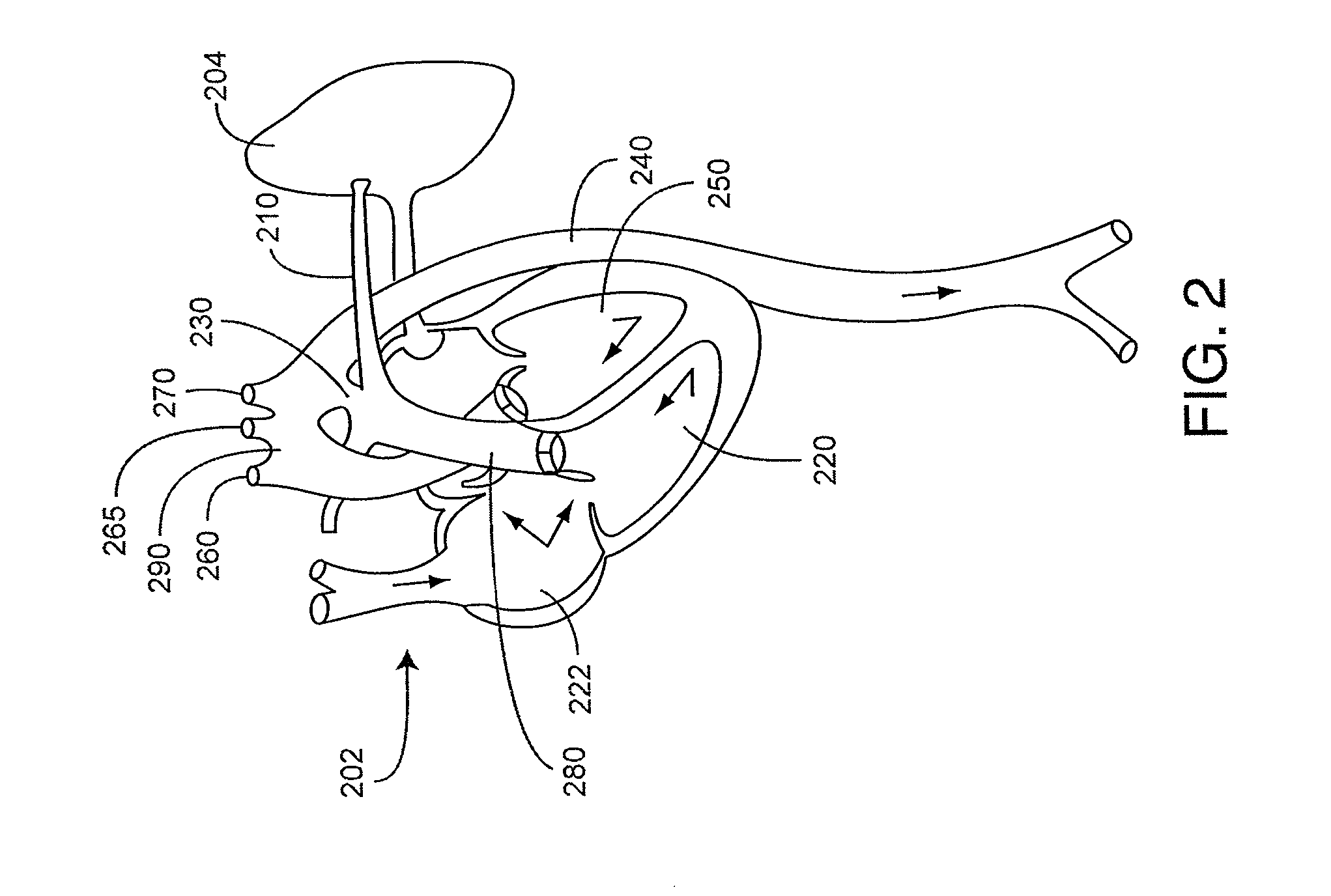Congenital heart disease monitor
a monitor and heart disease technology, applied in the field of congenital heart disease monitors, can solve the problems of inherently intermittent testing and extended testing time, and achieve the effect of improving diagnostic accuracy and accuracy
- Summary
- Abstract
- Description
- Claims
- Application Information
AI Technical Summary
Benefits of technology
Problems solved by technology
Method used
Image
Examples
Embodiment Construction
[0031]FIG. 4 illustrates CHD detection utilizing a single patient monitor 410 and corresponding sensor 420. In general, the monitor 410 provides a display or other indicator that directs a caregiver or other user to attach the sensor 420 to an initial tissue site for a first measurement and then to one or more other tissue sites for additional measurements. This procedure is described in further detail with respect to FIGS. 7A-B, below. For example, in a Phase I configuration 401, the sensor 420 is attached to a neonate's right hand so that the monitor 410 generates baseline site measurements. In a Phase II configuration 402, the sensor 420 is attached to a neonate's foot so that the monitor 410 generates comparison site measurements. In an optional Phase III configuration 403, the sensor 420 is attached to a neonate's left hand generating measurements at an additional comparison site. During each phase 401-403, the monitor 410 takes measurements for a length of time sufficient to d...
PUM
 Login to View More
Login to View More Abstract
Description
Claims
Application Information
 Login to View More
Login to View More - R&D
- Intellectual Property
- Life Sciences
- Materials
- Tech Scout
- Unparalleled Data Quality
- Higher Quality Content
- 60% Fewer Hallucinations
Browse by: Latest US Patents, China's latest patents, Technical Efficacy Thesaurus, Application Domain, Technology Topic, Popular Technical Reports.
© 2025 PatSnap. All rights reserved.Legal|Privacy policy|Modern Slavery Act Transparency Statement|Sitemap|About US| Contact US: help@patsnap.com



